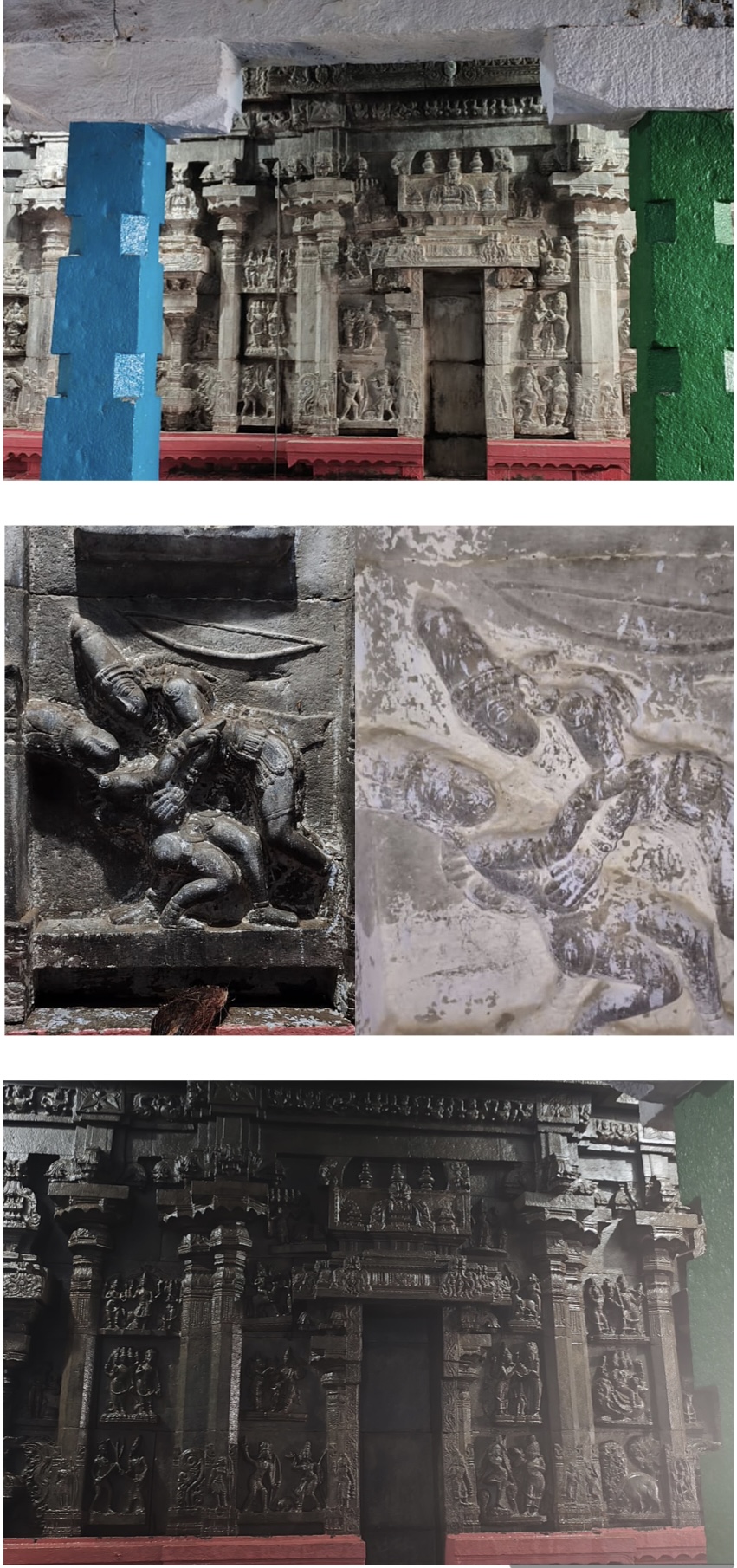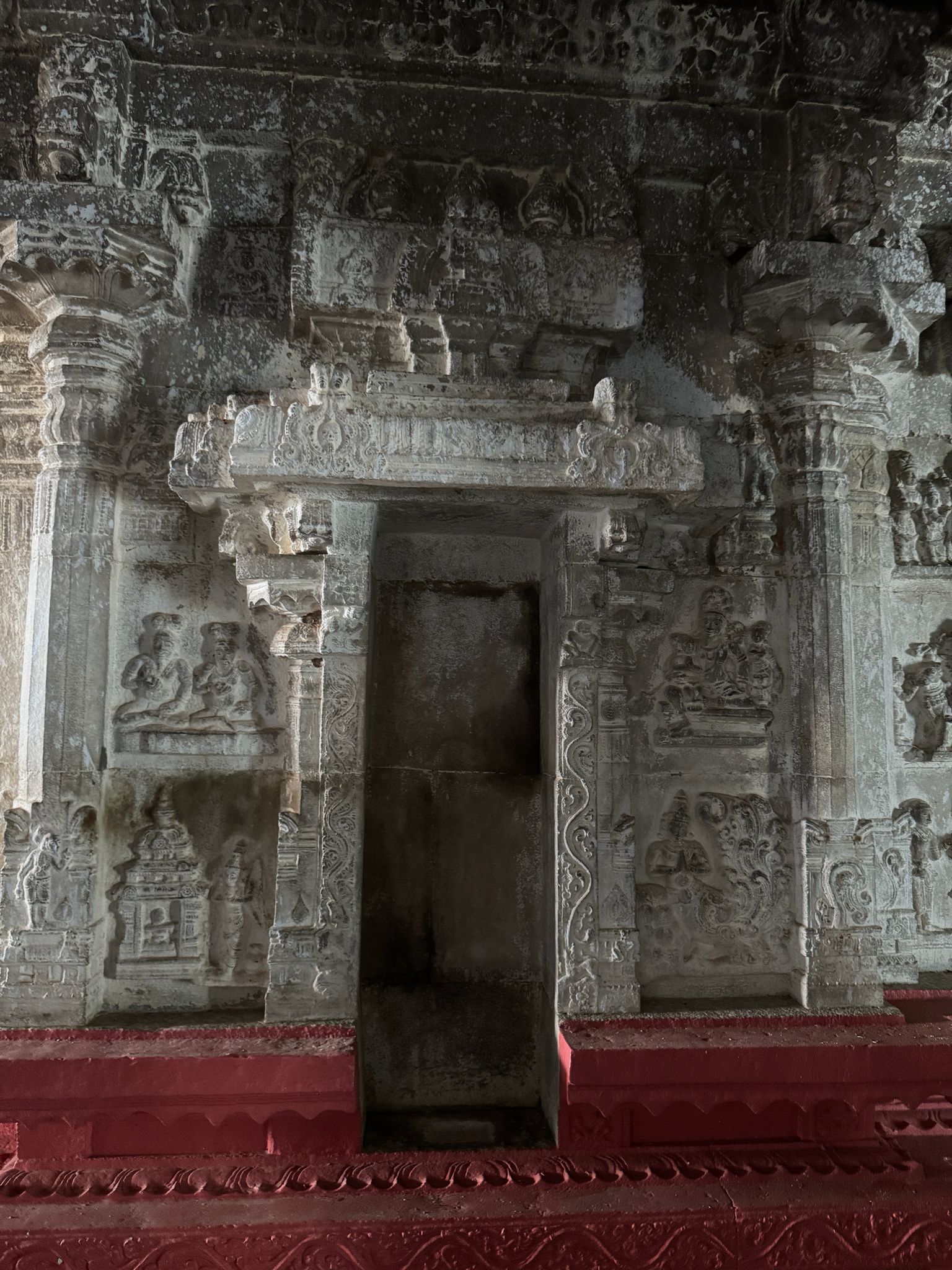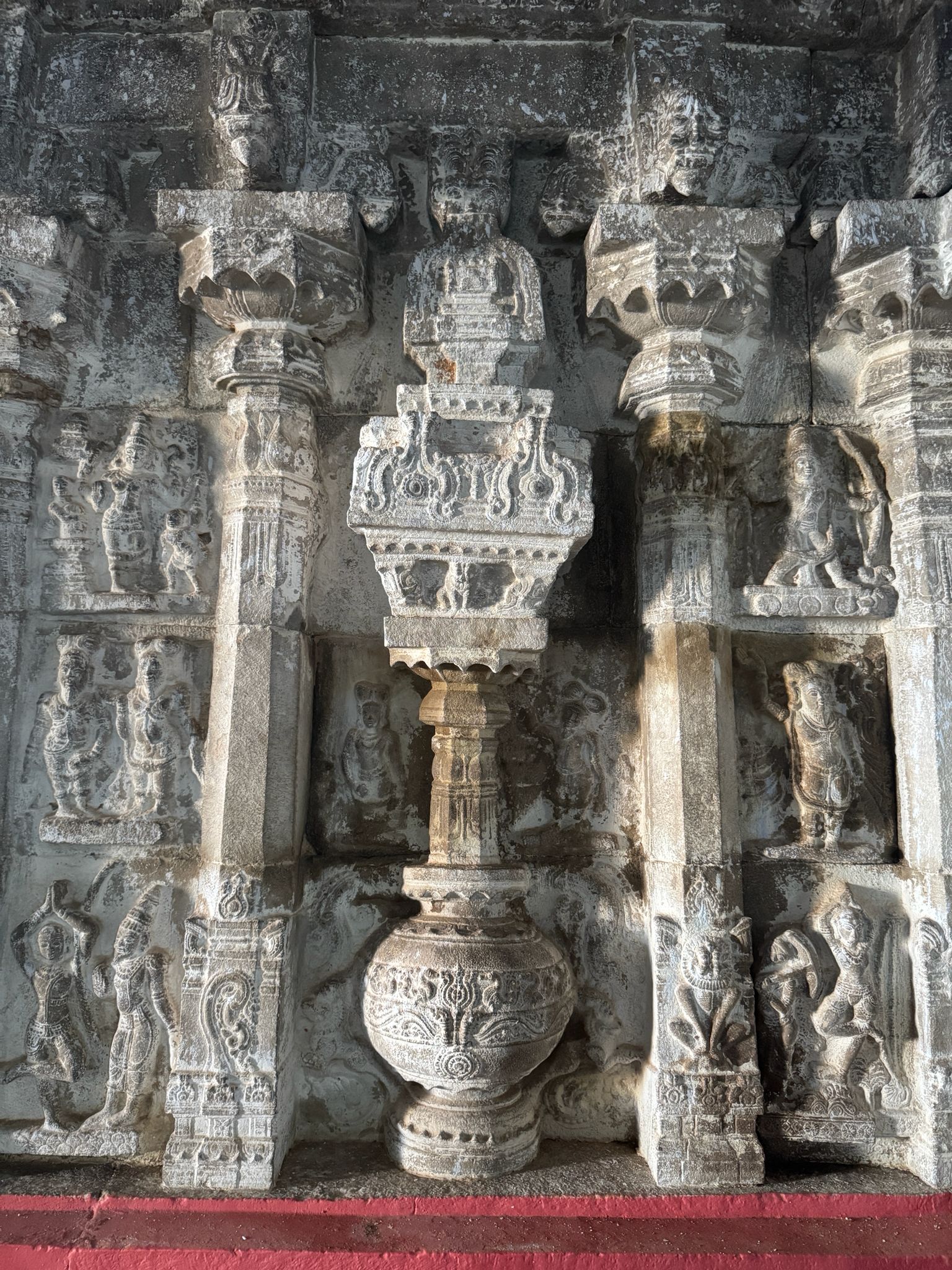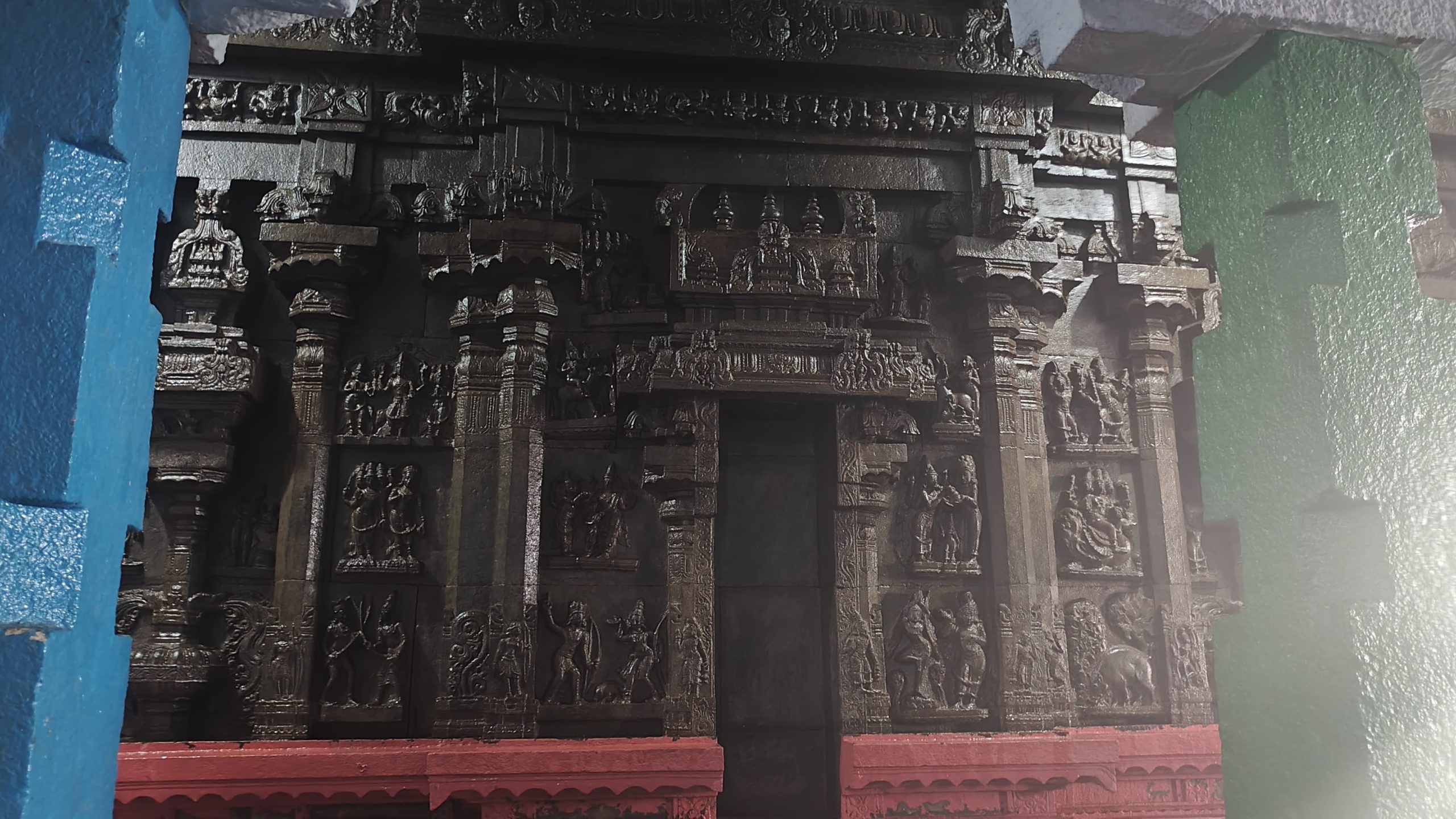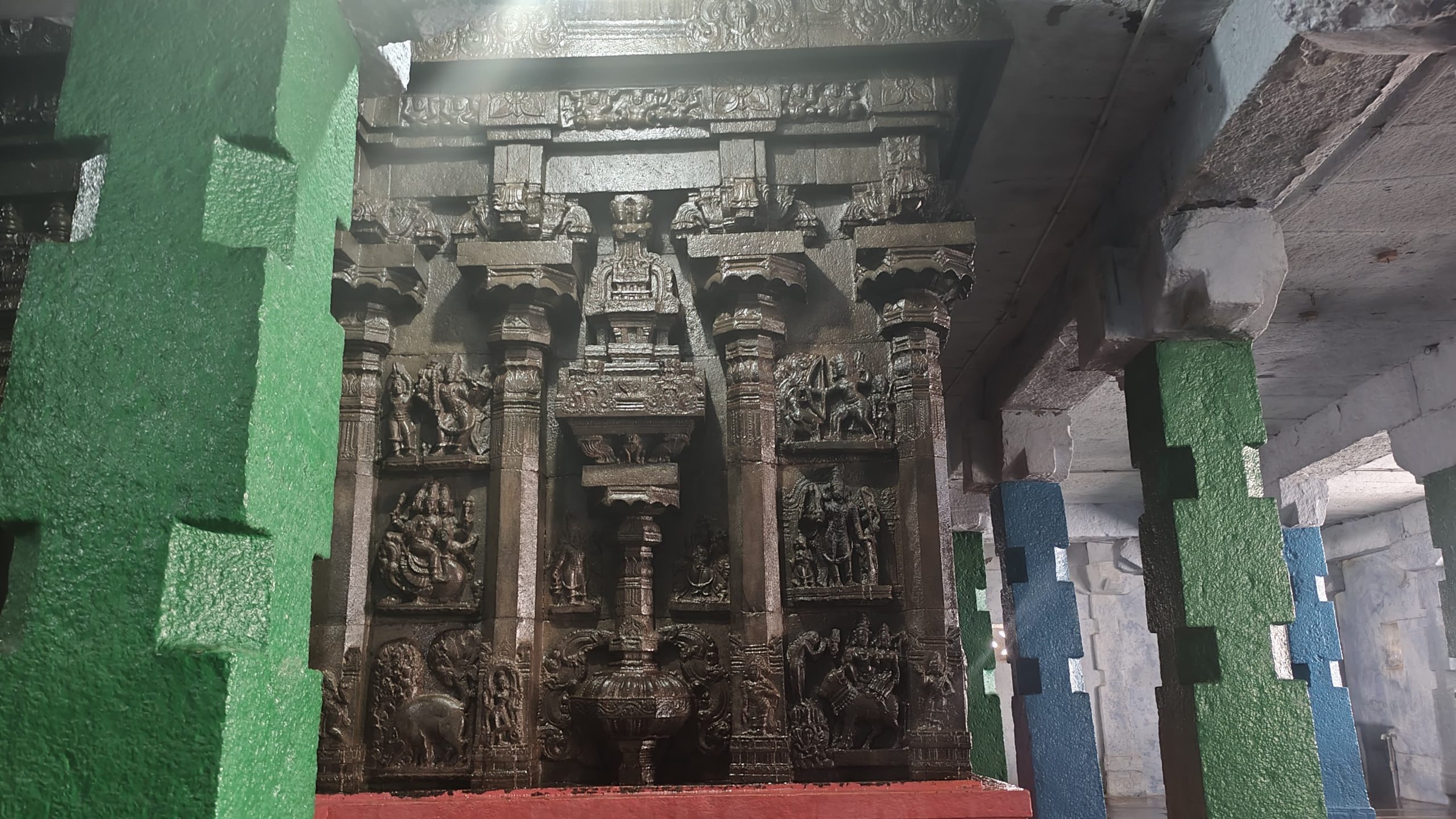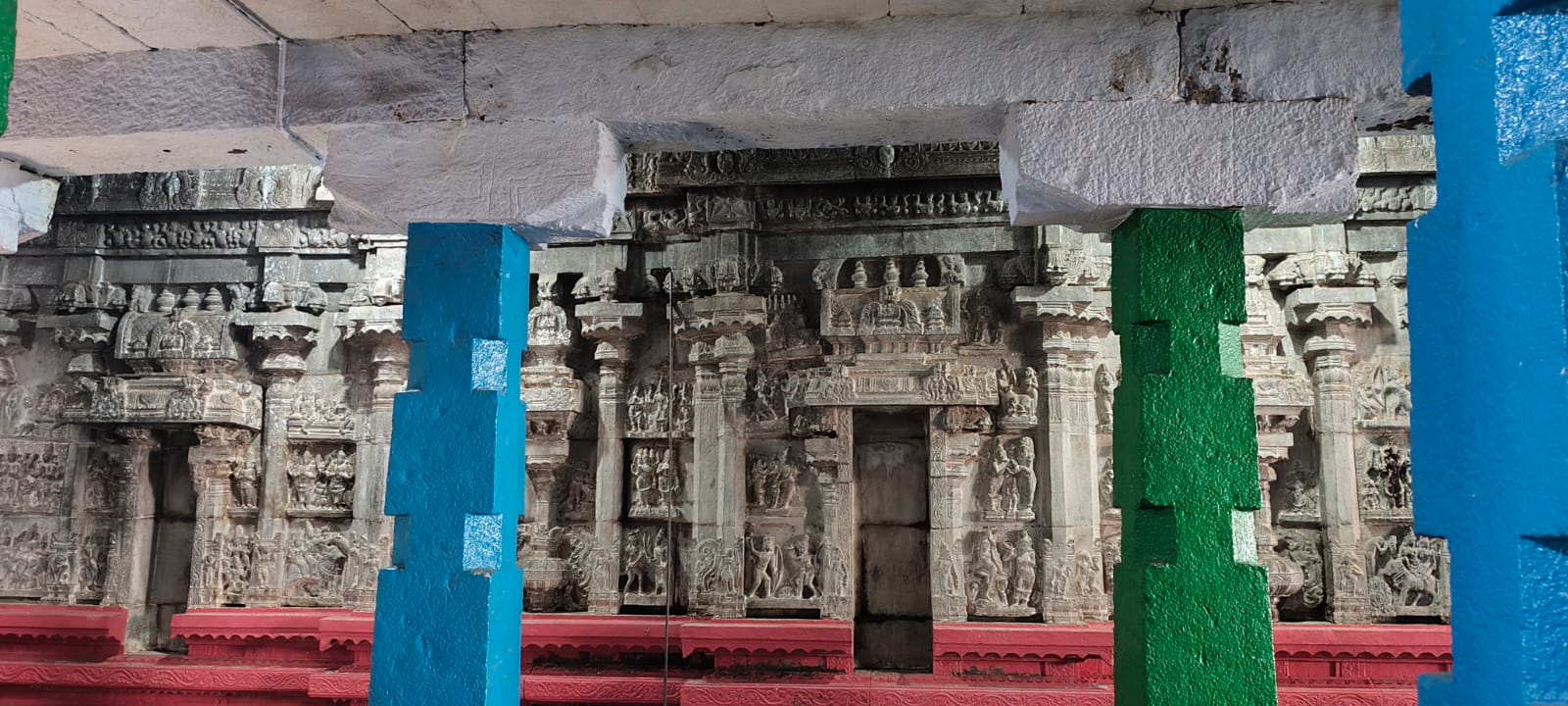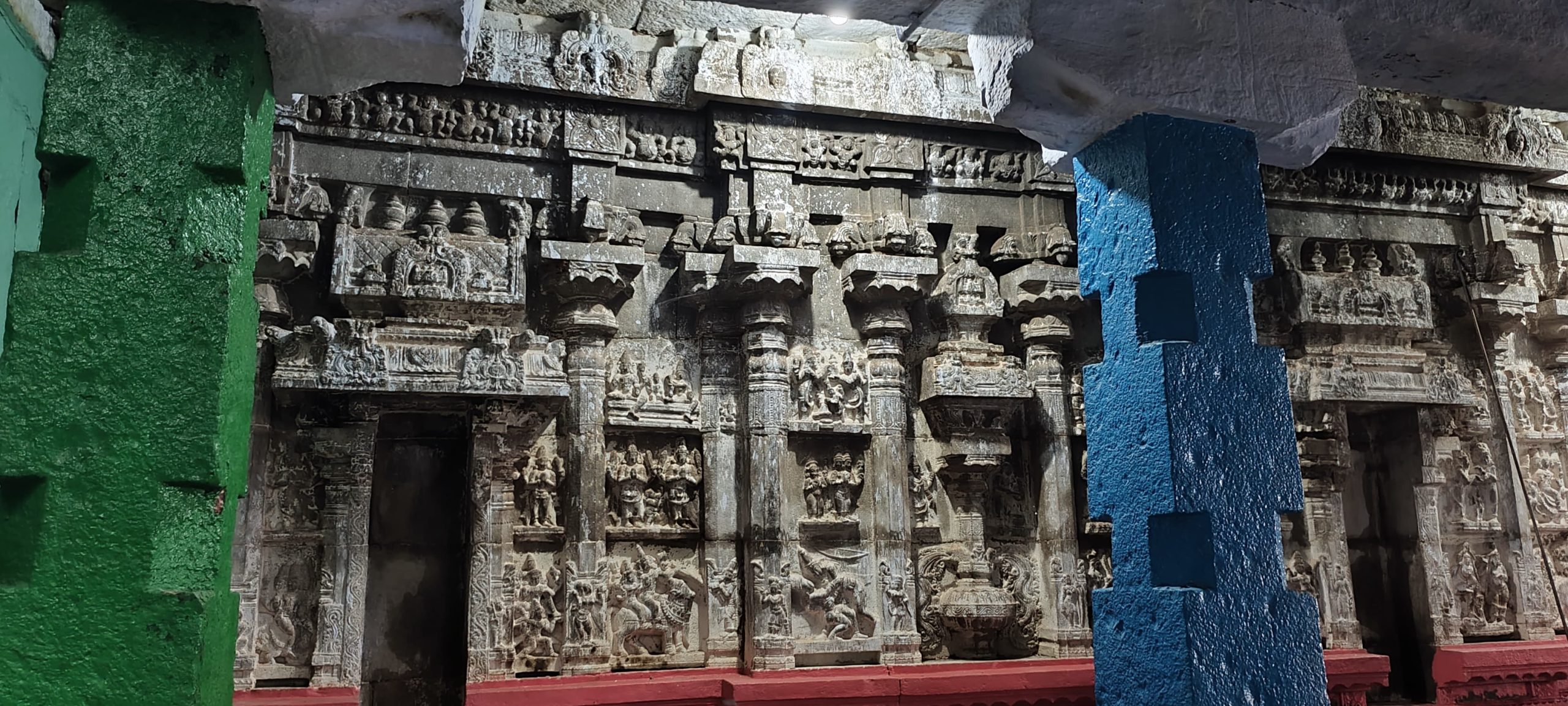Cleansing and Restoration of idols on temple walls
Sri Sangameshwara Swamy Temple, YSR Kadappa, Andhra Pradesh
Temple Details
Sangameswara Swamy Temple is an ancient Lord Shiva temple situated at the confluence of three rivers—Papagni, Vaahini, and Mogamooru. The word ‘Sangamam’ in Telugu means confluence, which gives the temple its name.
According to the Sthala Puranam, the Sivalinga here was consecrated by Maharshi Agastya. The Saptha Rishis are believed to have performed penance on the banks of the Papagni River, offering poojas and abhishekams to the Sivalinga.
Architecturally, the temple reflects the grandeur of Vijayanagara style, dating back to the 14th century. It features a majestic gopuram, intricately carved mantapam, and stunning sculptures of deities like Shiva, Ganesha, Nataraja, Rama, and Anjaneya. The entire temple is uniquely designed in the form of a Sivalinga.
Archaeological finds near the temple—such as coins, tools, and pottery from the Satavahana and Chola periods—highlight its historical significance.
Unique Features of the Sivalingam:
- Contains Sikha Sthanam, Brahmarandhra, and cow’s hoof print on its top.
- Engraved with Brahma Sutram.
- The Lingam contains 12 embedded lingas, visible through 12 distinct marks.
- Referred to as Bhasura Kshetram/Surya Kshetram, as sunlight directly illuminates the Lingam from the temple’s entrance.
This sacred site has been visited by the great saint-composer Tallapaka Annamacharya, and it finds mention in the prophetic Kala Gnanam of Pothuluri Veera Brahmendra Swamy, further cementing its spiritual and cultural importance.
Project Details
The walls of Sangameswara Swamy Temple are adorned with intricate sculptures depicting episodes from the Siva Puranam, Siva Kalyanam, Ramayanam, and Mahabharatam. These exquisite carvings not only enhance the temple’s artistic beauty but also serve as a visual narration of India’s sacred epics and scriptures.
A beautiful vigraham of Maharshi Agastya, who is believed to have consecrated the Sivalinga, is also present among the sculptures, paying homage to his divine presence and spiritual legacy.
We began the restoration work by conducting a careful trial on a 1 sq. ft. section of the main temple. Various liquids and cleaning agents were tested to ensure that they would not cause any damage to the original stonework. The results were meticulously compared with our expectations to confirm the safety and effectiveness of the approach. These findings were shared with the temple committee for their review and approval.
Upon receiving the satisfactory response from the Temple committee, we undertook the full-scale project of cleaning and restoring the exquisite sculptures that adorn the temple walls. These sculptures had been previously coated with lime and bore tough, persistent stains. Our team of skilled sculptors and restoration experts used specialized cleaning agents and techniques to gently remove the lime and stains, preserving the integrity of the original carvings while restoring them to their former glory.
The entire restoration process was completed in less than a month. The temple authorities have expressed great satisfaction with the outcome and the positive feedback received from devotees and visitors alike. We are honored to have contributed to preserving the cultural and architectural heritage of this sacred Thapo Kshetra.
Gallery
